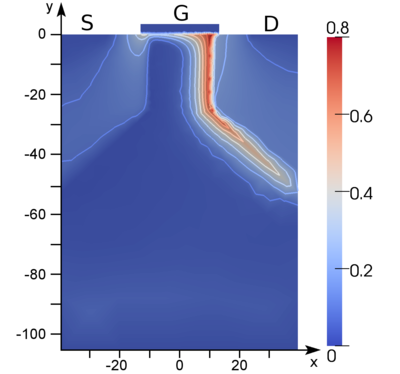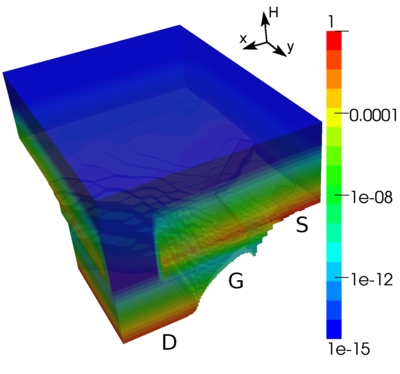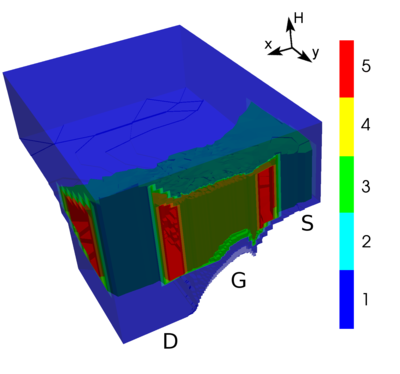Example: MOSFET
In the following selected results from the simulation of a MOSFET are presented. The applied drain-source bias is 0.9 Volt, and the voltage is set to 0.7 Volts. The body contact is grounded. Even though ViennaSHE is able to handle very complex device geometries and doping profiles, a simplified device geometry with piecewise constant doping profiles is chosen here for simplicity.
In the following plot the average carrier energy in electron Volts is shown. The acceleration of carriers from the source towards the drain due to the high electric field inside the channel is readily visible. Carriers decelerate again in the drain region due to scattering and the absence of large driving forces.

The average carrier energy is obtained by a multiplication of the distribution function with energy, integration over the whole momentum space, and division by the carrier density. The isotropic part of the mentioned distribution function, i.e. the zeroth-order expansion coefficient  , is plotted over total energy
, is plotted over total energy  below. In particular, mind the quasi-ballistic extension of the distribution function from the source towards the drain.
below. In particular, mind the quasi-ballistic extension of the distribution function from the source towards the drain.

We have also developed adaptive variable-order expansions, which allow for an increase of the expansion order only in regions of the device where the distribution function is far from an equilibrium Maxwell distribution. This results in less computational effort and thus faster simulation times, typically without sacrificing accuracy. The expansion orders employed in the simulation domain are shown below, where it can be seen that the adaptive scheme increases the expansion order particularly at low kinetic energies and in the active area of the device:




